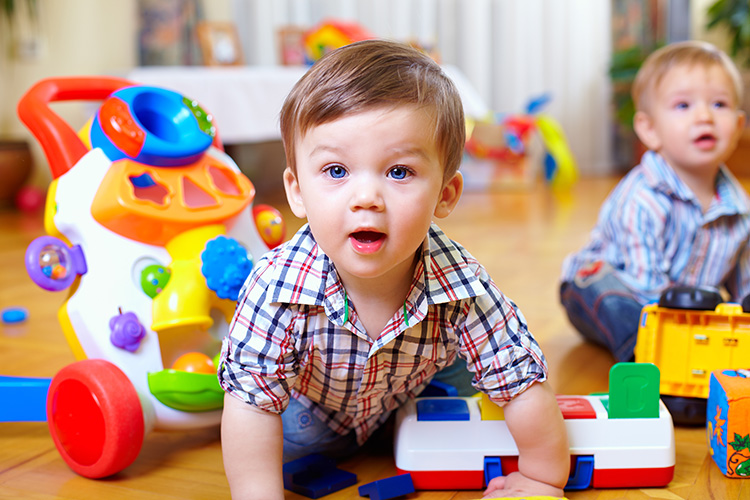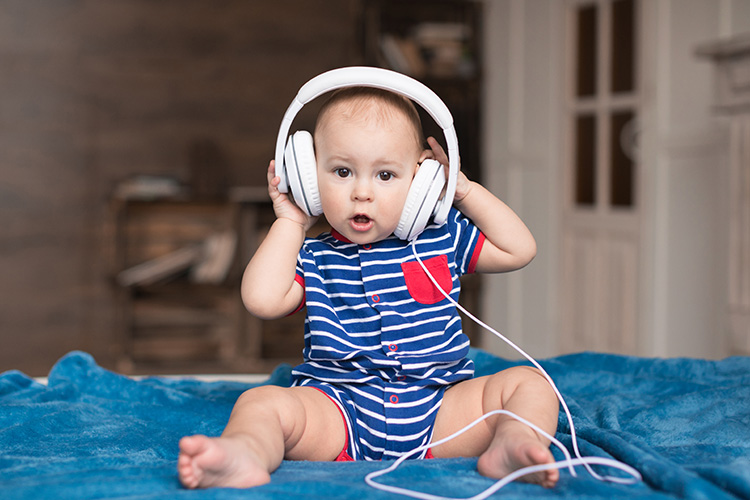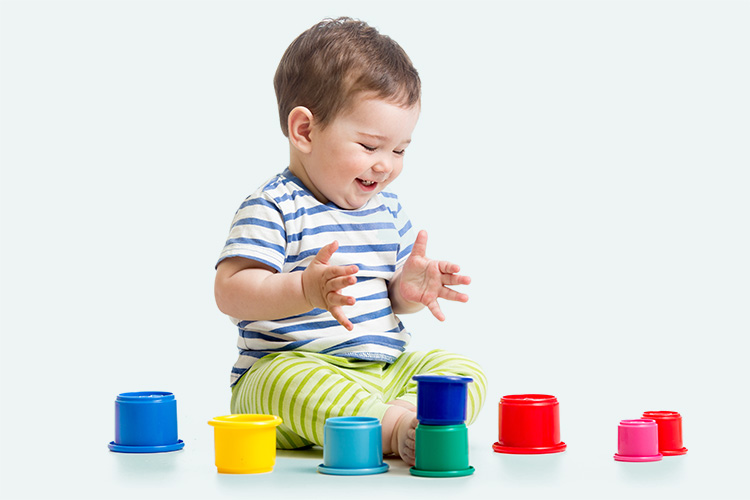My Baby is Almost a Year Old. Do I Need to Worry About his Speech and Language Development Yet?
The short answer is yes! Your child’s speech, language and social-emotional skills have been developing since before he was born. When your baby was in utero, he was learning language by listening to his mother talk as early as 30 weeks gestational age. Research has shown that babies are able to differentiate sounds in their native mother’s language versus foreign languages. This is why babies will calm more easily when they hear a familiar sound, like their mother’s voice. Between birth and 1 year of age, a child’s speech, language and social play skills are developing so quickly that it is difficult to know if your child is meeting his developmental milestones. Here is a breakdown to let you know what you should expect and when you should be concerned.

Speech development by 1 year of age
Speech development looks at the way and the pattern that your child says his sounds. A Speech-Language Pathologist will assess the sounds that your child is currently making to see if they are in line with the acquisition of typical sound development. It is normal for your child to use approximations of a real word when talking. For example, your child may say “ba” for ball or “papa” for grandpa.
Speech norm
Your child should use a variety of vowel sounds such as: (a, e, i, o, oo) and early developing consonants: /b/, /p/, /m/, /w/ and /h/.
When should you seek a speech assessment?
If your child is not laughing, babbling, or vocalizing to get attention and/or take turns.
Language development by 1 year of age
Language development is divided into two areas: expressive language and receptive language. Expressive language refers to a child’s ability to use words and put words together to communicate wants and needs. Receptive language refers to a child’s ability to understand what others are saying.
Expressive language norms
- says 1-3 words (i.e. ma, da, hi)
- babbles and uses a lot of consonants
- makes many noises while playing
- laughs a lot
Receptive language norms
- looks at the person saying his name
- understands the name of familiar objects
- understands no
- responds to simple questions
- requests by pointing
When should you seek a language assessment?
- if your child is not attempting to use different sounds for words
- if your child is not vocalizing during people games
- if your child does not respond to simple directions
- if your child does not respond to his name
- if your child does not smile when smiled at by a familiar caregiver
Social communication
Social communication looks at a child’s ability to use verbal and nonverbal language to interact for a social purpose. It is important for your child to learn how to recognize and use language within different social situations.

Social communication norms
A child should respond to adult interaction, shout or cry to get attention, vocalize in response to vocalization, use gestures and vocalizations to protest, imitate facial expression and demonstrate sensitivity to others’ moods.
When should you seek a social communication assessment?
If your child does not cry to get your attention, has limited interest in adult interactions, and/or is not affectionate with familiar people.
Play and speech-language developmment
Play refers to the way a child learns about the world around them. Play is the foundation of communication and demonstrates the child’s understanding of how every day objects and routines work. For instance, playing with a ball game can demonstrate a child’s ability to use eye contact, imitate an action, take turns, initiate and anticipate a routine, and follow simple directions.

Play norms
Most children will participate in speech-routine games, resist the removal of a toy, try to get an object that is out of reach, push a toy car, and start games with you such as peek-a-boo.
When should you seek a speech and language assessment?
If your child does not show interest in participating in games with adults, lacks anticipation in play, or does not search for hidden objects.
Feeding
Feeding looks at a child’s skills related to drinking and eating. A child’s readiness to use self-feeding skills is dependent on several factors including his coordination of oral motor skills (sucking, swallowing, biting, and chewing) and gross motor/ cognitive skills (mouthing, holding, sitting, pinching). No child is alike in his preference towards taste, texture and food preference. His attitude towards food will dictate his eagerness to experiment during meal times. What a child will tolerate one day may be completely different another day. This does not mean that a food should be ruled out but rather tried again in the near future.
Feeding norms
A child should be developing his drinking skills by independently holding a bottle and/or sippy cup with both hands and transitioning to using a cup without a lid and holding the cup with both hands and taking a few sips without help. A child’s self-feeding skills are dependent on the age at which your child began eating (4 to 6 months as recommended by your doctor or pediatrician) as well as the method used to introduce food (traditional-led weaning versus baby-led weaning). A child should be showing interest in food, holding and mouthing large crackers or cookies, playing with spoons by grabbing, banging and mouthing, and enjoying finger feeding soft food.
When should you seek a feeding assessment?
If your child does not show interest in eating; refuses to eat; frequently chokes, gags, or throws up; or is unable to transition to different textures (e.g. from pureed to crunchy).
If you have any concerns about the development of your child, many Speech Language Pathologists offer free consultations over the phone to determine if your child would benefit from speech and language services. At Speech Pathways, we are happy to field any questions parents may have regarding their child’s speech, language, and social development.
Call us: 905-302-0264
